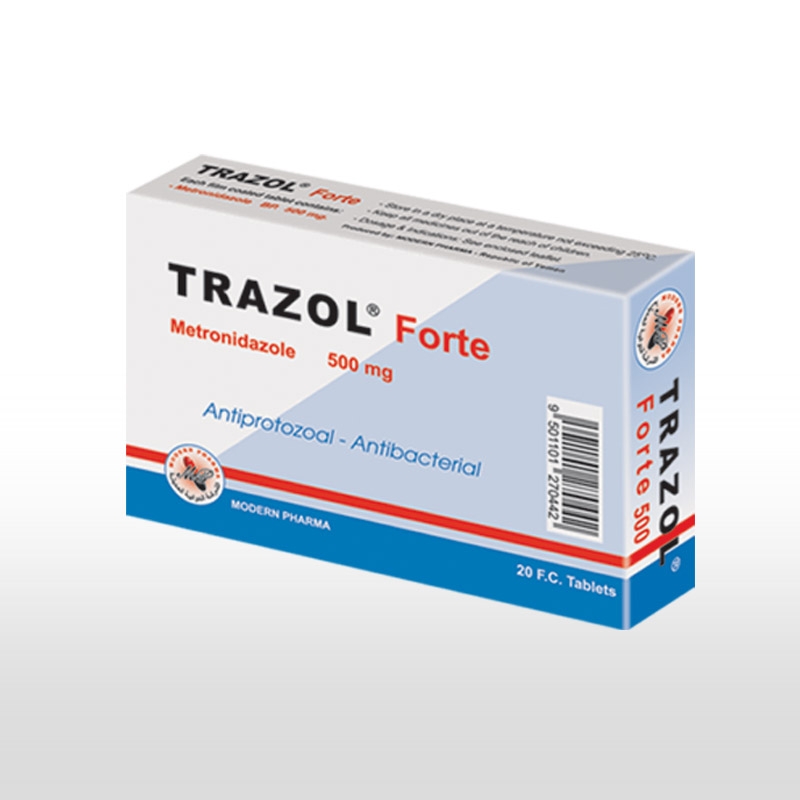Trazol Forte
- Metronidazole is a 5-nitroimidazole derivative with activity against:
- Anaerobic bacteria (Bacteroides, Clostridium Spp., Gardnerellavaginalis, and Helicobacter pylori)
- Protozoa (including Balantidium coli, Blastocystishominis, Entamoebahistolytica, Giardia Lamblia and Trichomonasvaginalis).
- Metronidazole is readily absorbed following administration by mouth and bioavailability approaches 100%. Peak plasma concentrations of approximately 5 and 10 μg /ml are achieved usually within 1 to 2 hours after single dose of 250 and 500 mg respectively.
- Absorption may be delayed, but is not reduced overall by administration with food.
- Metronidazole is widely distributed. It appears in most body tissues and fluids including bile, bones, breast milk, cerebral abscesses, cerebrospinal fluid, liver abscesses, saliva, seminal fluid and vaginal secretion. It also crosses the placenta and enters the fetal circulation.
- Metronidazole is metabolized in the liver by side chain oxidation and glucuronide formation.
- The elimination half life of metronidazole is about 8 hours.
- The majority of the dose of metronidazole is excreted in urine, mainly as metabolites, a small amount appears in the faeces.


